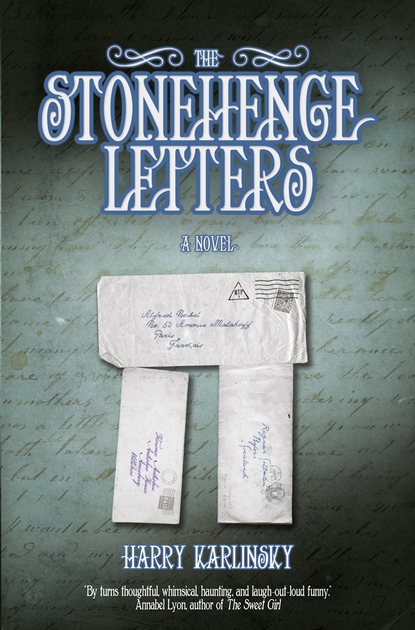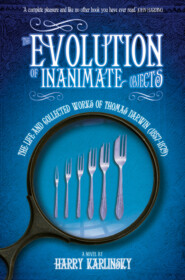По всем вопросам обращайтесь на: info@litportal.ru
(©) 2003-2024.
✖
The Stonehenge Letters
Автор
Год написания книги
2019
Настройки чтения
Размер шрифта
Высота строк
Поля
Late this morning I walked to Stonehenge. Though I have visited the exquisitely-coloured stones a thousand times before, I have never failed to be moved by their startling, sudden presence. For even from the banks of the nearby River Avon, the old stones are at first nowhere to be seen. Yet as one moves determinedly through the crackling grass and up the winding valley with the turquoise spring flowers signalling the traveller’s way, the tallest of the stones suddenly appear! Those nearest join together in a large outer circle – as if each was holding another’s hands – and together the ancient stones stand in defiant solidarity against the onslaught of time.
I stayed until evening. The sense of peace and tranquillity are with me still.
Ever sincerely,
Florence Antrobus
Though not as prolific a correspondent as Florence, Nobel’s responses were always courteous and gracious. He was genuinely admiring of Florence’s ‘poetical’ powers of observation. But Nobel’s intrinsic inquisitiveness and pragmatism also led to more prosaic questions.
Björkborn Manor
13 July 1895
Dear Florence, (I trust I may name you so?)
Thank you for your recent letters. It is particularly exciting to hear news of your intention to publish a ‘sentimental’ guide to Stonehenge. I can think of no better wordsmith to capture the varying moods and colours of the ‘great relic’. But might your ‘sentimental’ guide also be a ‘practical’ one – a compilation of the facts and considerations of learned authorities on the subject of Stonehenge? From where did the stones arise? What purpose lay behind this ancient structure? Who were the people who built these circles? I still recall with pleasure your entertaining account of such matters during my visit to Stonehenge. Might you now explore these questions in a more methodical and scholarly way? It is my view that true knowledge emerges only by careful and detached study, preferably by examining the words and works of those who are cleverer than one self.
But no more preaching! I have news that may interest you. I am now settled at Björkborn Manor and have shared your interest in Stonehenge with the local antiquarians. It appears there is a place in southern Sweden where many larger boulders also stand – but in the shape of an ancient ship. It is known as the Ales Stenar.
Perhaps one day I will have the pleasure of providing you with a tour of our country’s Stonehenge?
Sincerely,
A. N.
P.S. Please accept my gift of a Remington typewriter. It is a selfish gesture on my part as I take such delight in reading your tidings of Stonehenge.
Florence was pleased to learn of Ales Stenar. She was even more delighted to receive the typewriter. Taking Nobel’s suggestions seriously, she began to gather and read all existing accounts that touched upon Stonehenge, forwarding to Nobel facts of particular interest. In response, Nobel’s next gift was a camera.
He was now encouraging Florence to document the general appearance of Stonehenge, not only by providing descriptions of the individual stones, but by including relevant illustrations and photographs. In thanking Nobel, Florence included not only photographs of Stonehenge but also a keepsake of her own likeness.
Nobel was, of course, deeply touched by Florence’s personal photo and her appreciation. However, it would be some time before he would write again. After the summer at Björkborn Manor, Nobel had travelled south to Paris. That fall, he began to experience bouts of severe chest pain. Nobel was hospitalised against his protestations and then spent two months confined to his Paris mansion. It was a contemplative Nobel who wrote Florence from Paris in November 1895.
Figure 12. Florence Antrobus.
5 November 1895
Paris
Dear Florence,
I’m afraid my delay in writing is by Doctor’s orders. My heart troubles are severe and I have been ordered to bed. Thespirits of Niflheim have descended and one of my few pleasures has been to receive your letters and the accompanying photographs. Indeed, it has given me great satisfaction to see you are progressing with your account of Stonehenge. Your book will be a lasting and noteworthy legacy, one that travellers to Stonehenge will find useful and inspiring in the years ahead.
Lately I, too, have been considering my contribution to posterity. As I am certain I am much more unwell than my doctors suspect, I wish to ensure I have made my bequests to those who are dear to me. I am now in the process of rewriting my Last Will and Testament. May I include you in some way? Your letters have meant a great deal to me, and I have valued our growing friendship, a rare treasure in my life of loneliness. You have been steadfast in refusing any monies for you or your family. But is there something that you might accept from a friend?
Sincerely,
Alfred
P.S. I am staring at your lovely red hair as I write this letter. This photograph is one of the dearest gifts I have ever received.
Florence initially refused to respond directly to Nobel’s heartfelt enquiry, assuring her friend he had years to live and that there was no rush in determining bequests of any kind. Instead, for the next six months, her letters to Nobel continued in the vein that had been previously established: impressions of Stonehenge that were now augmented by an increasing number of photographs and illustrations.
Florence was, in fact, deeply distressed by Nobel’s declining health. Due to a temporary improvement in his heart condition, Nobel was again well enough to summer at Björkborn Manor in July and August of 1896. That fall, however, Nobel’s angina worsened, and this time he was more convinced than ever that he was dying. Nobel again wrote to Florence, insisting she specify what bequest she was willing to receive from a man near death.
Florence finally responded as follows:
Amesbury Abbey
17 October 1896
Dear Alfred,
I, too, have valued our correspondence and friendship but I am afraid I cannot accept a financial bequest of any kind. As you are insistent, I now have one suggestion. You have honoured me with your interest in my passion – Stonehenge. You have challenged me to go beyond the beauty of Stonehenge and to learn more about its mysterious presence. I have strived vainly to do so – yet I have found so little is known with certitude.
Вы ознакомились с фрагментом книги.
Приобретайте полный текст книги у нашего партнера:
Приобретайте полный текст книги у нашего партнера:






